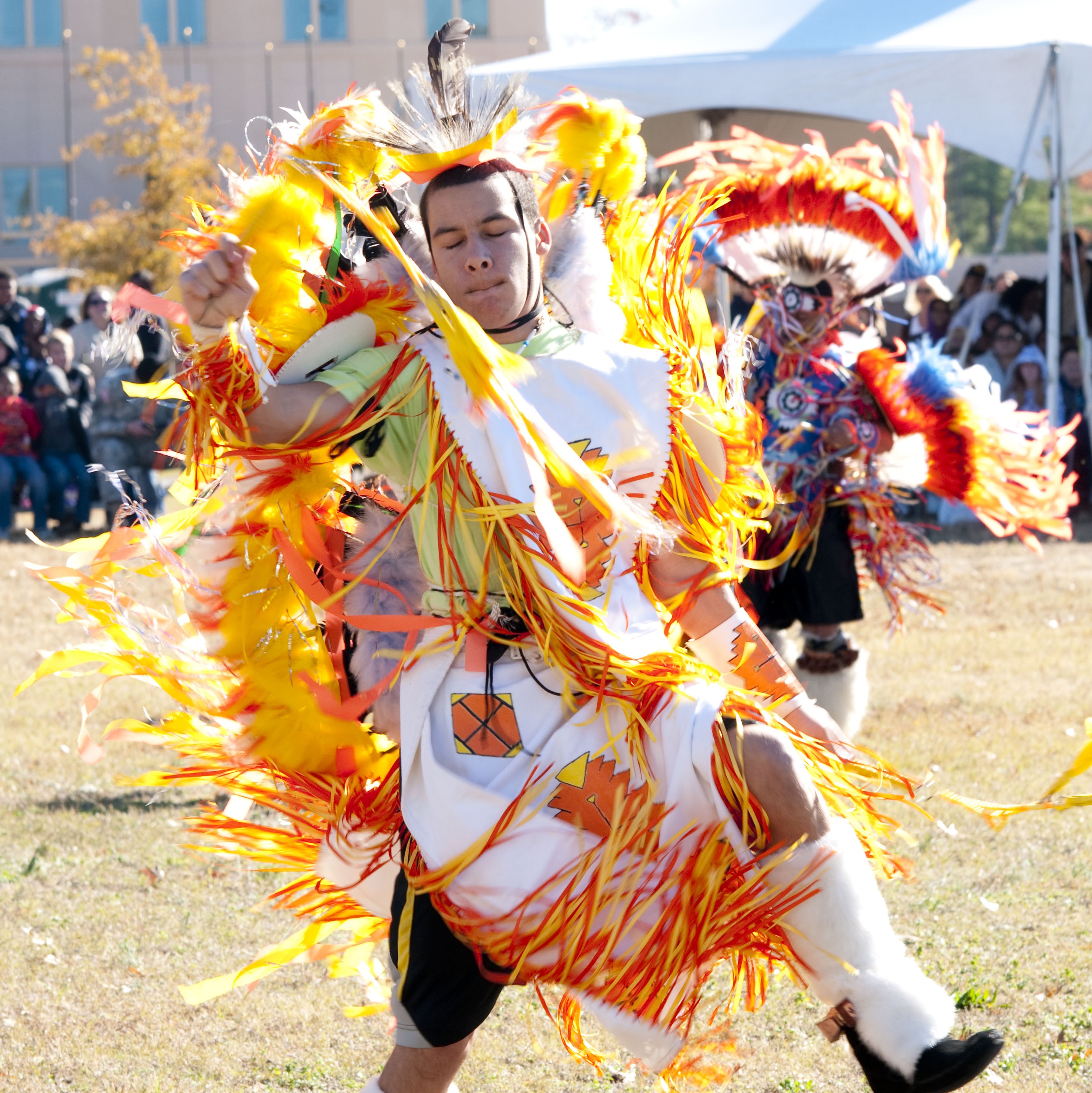
FORT BRAGG, N.C. - When Native American Soldiers returned from World War II, they were welcomed into their tribes as warriors.
Using a freeform, contemporary style of dance, the tribal men moved to the fast beat of rawhide drums - a dance that eventually became the men's fancy dance.
At least, this is the story passed down to Sgt. 1st Class Jared Reyes, a Native American Soldier who performed the ritual dance on Nov. 17, in honor of American Indian Heritage Month. Reyes (of Cherokee ancestry) joined other tribes on the Fort Bragg Polo Field for a Native American pow-wow that featured inner-tribal dancing, traditional food, informational booths and kid-friendly teepee displays.
"I was pretty much raised on the Chinook reservation. Just going to the pow wows ... it's pretty much like a Family reunion. That's one of the great things about it," said Reyes, who attends as many cultural events as his schedule allows.
Reyes performed on the field in full-feathered ceremonial regalia, along with members of the Lumbee, Apache, Crow, Navajo, Aleut, Seminole, Coharie, Chickasaw and Alaskan-Indian tribes.
"I think the best part is teaching the younger people cultural traditions and trying to get away from some of the stereotypes that are out there," said Reyes, who said he was proud to participate in the educational experience.
"So far (the kids) love it. Hopefully they'll take it with them and as they grow older, they'll pass it on," added Reyes.
Many Native American dances are divided by gender, with men taking the upbeat tempo of performances like the grass dance and northern traditional. Women and girls stepped to the tune of slower cadences like women's fancy and women's traditional. Seventeen-year-old Samantha Lanning, a member of the Cary tribe, first learned the steps from her mother. Lanning has participated in tribal dance since the age of two, when she could first step to the rhythmic beat of a drum. Now, Lanning describes one of her favorites - the women's fancy shawl - as a celebration of the feminine spirit. Lanning described the importance of the dance, "They have a shawl and they dance like a butterfly. It symbolizes beauty and grace."
Taking time to honor veterans, the dancers took center field, as male dancers performed the honor dance (or "warrior dance") for Samuel Jesse Smith, Sr. During World War II, Smith served in the Marine Corps as a code talker using the Navajo code developed by a small group of Native American Soldiers. This language proved to be the only unbreakable code throughout the course of the war. The charged, willful dance movements and deep pound of the drum embodied the spirit of warriors like Smith.
The drum is the heartbeat of all native people and that is why the drum is the most important part of our gatherings - without that there wouldn't be any dancing," said John Oxendine, a Lumbee tribe member and the event's Native American master of ceremonies. Throughout the pow wow, Oxendine described native dances like the friendship dance - a circular line of tribal members and guests who held hands as they wound through the sacred dance space.
Afterwards, Lisa Standing-Crow Miska commented on the Fort Bragg Facebook page, "Wished it could of lasted longer ... "

Social Sharing